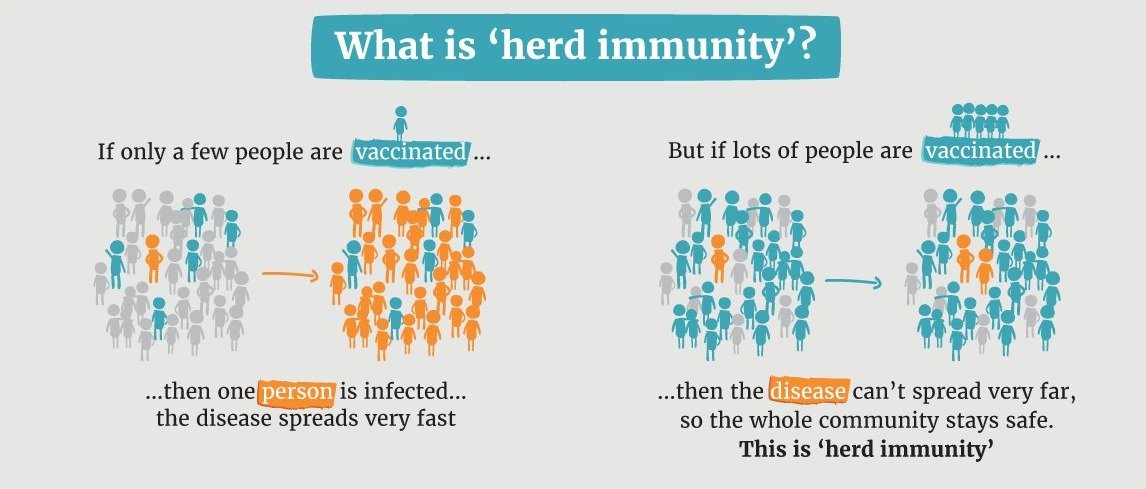Video
Consultation

عربى

Video
Consultation

Book An
Appointment

Accident & Emergency
99616 30000

Help Desk
99616 40000

Robotic
Surgery

Patients Login Portal

Herd immunity is an epidemiological concept that describes a state where the human population is sufficiently immune to a disease such that the infection will not spread within the said population.
What is Herd Immunity?
Herd immunity is an epidemiological concept that describes a state where the human population is sufficiently immune to a disease such that the infection will not spread within the said population.
In other words, sufficient people in a community will acquire immunity either due to a vaccine or through natural immunity, such that the vulnerable fractions of the society are protected.
What’s Ro or R nought?
It is the number of people an infected person in a community can presumably infect.
In the case of SARS -COV 2, Ro= 2 to 3 (this implies that a Covid-19 infected person can infect up to 2-3 healthy people).
How can Herd immunity be achieved?
In the case of SARS-COV 2 or COVID-19, with Ro= 3, the formula to achieve Herd immunity or Herd immunity threshold is Ro-R1/Ro = 3-1/3= 2/3 = 67%. (R1 is an R0 value of 1). Hence, to attain herd immunity, 67% of the population has to be immune- acquired either by herd immunity vaccination or by recovering from the Coronavirus infection.
How will the herd immunity work?
Scenario 1:
A) The population acquiring immunity by a natural infection: Let us assume a population of 1.3 billion, the SARS COV2 doubling rate is said to be about 3-5 days. Hence the number of people falling ill will be 67% of the population doubling in 3-5 days -> 87,100,000.
14 % of patients will need oxygen -> 12,194,000.
4% will need ventilator support -> 487,760.
B) Slowing down the rate of infection by partial lockdown or shorter duration of lockdown, thus ‘Flattening the curve’. The problem with this strategy is that coming out of lockdown can result in:
- The second wave of infection.
- Infection within the community ( asymptomatic).
- Visitors importing cases into the community.
C) Slowing down the rate of infection by longer duration of lockdown :
This can result in:
- Mutations in the virus
- Multiple strains
- Less virulent strains
- Negative effects on the economy and all its implications.
D) Continuing without a lockdown, with prophylaxis measures and increased COVID testing.
- Hydroxychloroquine ( prescription drug ): associated with dangerous side effects (eg: arrhythmia).
- Vitamin C
- Vitamin D
- Zinc
- Quercetin
But is Herd Immunity a viable solution?
The sad fact is that herd immunity just isn't a solution to our pandemic woes. Yes, it may eventually happen anyway, but hoping that it will save us all is just not realistic. The time to discuss herd immunity is when we have a vaccine developed, and not one second earlier, because at that point we will be able to really stop the pandemic in its tracks.
Until we have a vaccine, anyone talking about herd immunity as a preventative strategy for COVID-19 is not being realistic. Fortunately, there are other ways of preventing infections from spreading, which all boil down to avoiding people who are sick.
So stay home, stay safe, and practice physical distancing as much as possible. Our healthcare crew and top resources at Lakeshore, Kerala are all prepared to fight this pandemic. We are one of the largest independent multi-speciality hospitals in India.
Dr M.S.Nebhu
Cardiac Anesthesiologist
VPS lakeshore hospital